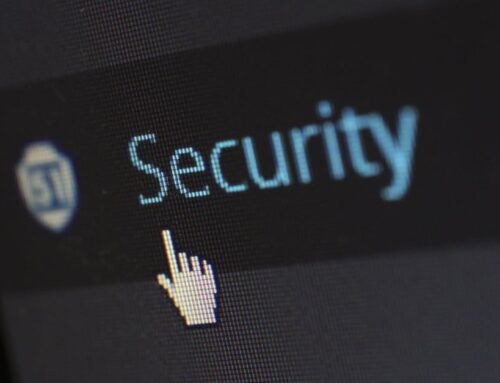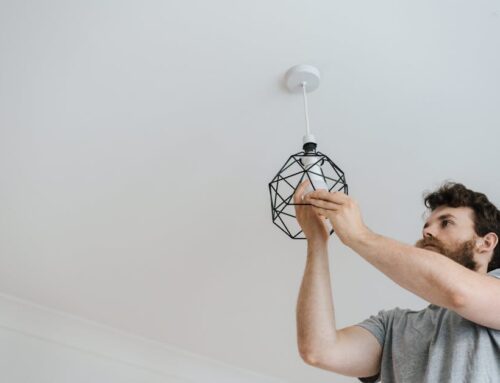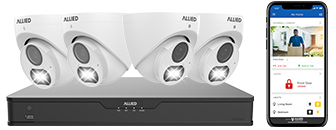Introduction to Smart Homes in Austin
Smart homes are revolutionizing the way residents in Austin live, offering convenience, security, and energy efficiency through advanced technologies. Austin, known for its technology-driven culture and vibrant community, is an ideal city for adopting smart home applications due to its robust infrastructure and tech-savvy population.
A smart home utilizes internet-connected devices to enable the remote management and monitoring of systems and appliances. The concept encompasses various technologies, from simple home automation like lighting control to more complex integrations involving energy management and security systems. As these technologies evolve, they provide not only increased comfort and luxury but also significant improvements in energy conservation and home security.
The integration of smart home devices in Austin offers several unique advantages. The city’s infrastructure supports robust internet connectivity, which is crucial for the seamless operation of interconnected devices. Additionally, Austin’s climate, with its hot summers and mild winters, allows residents to leverage smart thermostats and energy management systems to maintain comfortable living conditions while optimizing energy usage.
Moreover, Austin is home to a growing number of tech companies and startups that contribute to the innovation and development of smart home technologies. This environment fosters a community that is knowledgeable and enthusiastic about adopting new technologies, ensuring ample support and resources for smart home users.
The benefits of setting up a smart home in Austin extend beyond mere convenience. Enhanced security features, such as smart locks and surveillance cameras, provide peace of mind by allowing homeowners to monitor their property remotely. Additionally, the integration of smart lighting and smart thermostats can lead to significant energy savings, aligning with Austin’s commitment to sustainability and environmental responsibility.
As the smart home market continues to grow, it offers a wide range of products and solutions tailored to different needs and preferences. Whether you are looking to automate specific tasks or transform your entire home into a smart ecosystem, the possibilities are endless. By understanding the local context and leveraging available technologies, Austin residents can create smarter, more efficient living spaces.
Understanding Smart Home Technologies
Smart home technologies have made significant advancements in recent years, leading to greater convenience, security, and energy efficiency in residences. To understand these technologies better, it’s crucial to gain knowledge of the various categories of smart home devices, their functionalities, and their roles in a cohesive smart ecosystem.
Categories of Smart Home Devices
Smart home devices can be broadly categorized into several key areas:
- Smart Lighting: Includes bulbs, switches, and fixtures that can be controlled remotely via apps or voice commands. Popular brands include Philips Hue and LIFX.
- Smart Thermostats: Devices like the Nest Learning Thermostat and the Ecobee can learn your schedule, optimize heating/cooling, and provide energy savings.
- Smart Security Systems: Encompasses smart locks, cameras, and alarm systems. Key players are Ring, Arlo, and August.
- Smart Speakers and Displays: Devices such as Amazon Echo, Google Nest Hub, and Apple HomePod enable voice control and integration with other smart devices.
- Smart Appliances: This includes smart refrigerators, washers, dryers, and ovens from brands like Samsung and LG that offer remote operation and monitoring.
Home Automation Protocols
Several protocols facilitate communication between smart home devices. Understanding these protocols is essential for ensuring compatibility and integrating devices seamlessly:
- Zigbee: A low-power, wireless mesh network standard that connects a variety of smart devices, including lights and sensors.
- Z-Wave: Another wireless protocol designed for reliable low-latency communication, primarily used in home automation.
- Wi-Fi: Common and convenient for many smart devices, though it can be power-consuming compared to specialized protocols like Zigbee and Z-Wave.
- Bluetooth: Effective for short-range communication, often used in smart locks and speakers.
- Thread: A relatively new protocol that offers secure and reliable mesh networking, working particularly well with IoT devices.
Key Considerations for Compatibility
When setting up a smart home, ensuring compatibility between devices and platforms is crucial:
- Hub Utilization: Smart hubs (e.g., SmartThings, Wink) can integrate devices using various protocols, facilitating centralized control.
- Voice Assistants: Compatibility with voice assistants such as Amazon Alexa, Google Assistant, or Apple Siri is vital for tailoring your smart home to your preferred ecosystem.
- Interoperability: It’s essential to choose devices that work well together, often indicated by compatibility with protocols like Zigbee, Z-Wave, or initiatives like Matter by the Connectivity Standards Alliance.
Security Concerns
Security is a critical aspect of smart home technology. Here are some key considerations:
- Network Security: Use strong, unique passwords for your Wi-Fi network and consider setting up a separate network for smart devices.
- Firmware Updates: Regularly update the firmware of smart devices to protect against vulnerabilities.
- Data Privacy: Be aware of how and where your data is stored. Opt for devices that offer secure data storage and transparent privacy policies.
By understanding these fundamental aspects of smart home technologies, you’re well-equipped to make informed decisions on integrating such systems into your home, ensuring a seamless and secure smart home experience.
Researching Local Service Providers and Solutions
When embarking on the journey to set up a smart home in Austin, one of the critical steps is researching local service providers and solutions. This ensures that you select reliable, reputable companies that offer the best technology and customer service.
Finding a Reputable Provider
A significant player in the Texas smart home security market is Allied, an award-winning home security installation and alarm monitoring company. Allied has been serving Texas for almost three decades and has built a strong reputation for exceptional customer service and price match guarantees.
Allied offers a comprehensive range of smart home security systems and surveillance systems, ensuring that your home is not only smart but also secure. With locations across Texas, including Austin, the company is well-positioned to provide local, personalized service.
Security Solutions and Automation
For those looking to enhance both the security and automation of their homes, Allied offers limitless options for smart home security solutions. Their packages include:
- Police, medical, and fire alarm monitoring
- Surveillance systems with real-time monitoring
- Complete smart home security systems
Moreover, Allied’s monitoring services start at just $19.95 per month, making it an affordable option for many homeowners. The company also provides free same-day setup, adding convenience to their list of benefits.
Residential and Commercial Solutions
Allied’s expertise is not limited to residential properties. They also offer a wide range of security solutions for small businesses and commercial facilities. This makes them a versatile choice if you need to secure multiple types of properties.
Unmatched Customer Service
Allied is known for its customer service, boasting a level of service that you won’t find with other alarm companies. They ensure that their customers are fully satisfied with both their products and services. Their price match guarantees also ensure that you receive the best value for your investment.
In summary, when researching local service providers for your Austin smart home, Allied stands out as a reliable and established option. With a strong track record, extensive range of security and automation solutions, and exceptional customer service, they provide a compelling choice for those looking to create a smart and secure home.
Setting Up Essential Smart Home Devices
Setting up essential smart home devices involves selecting and installing gadgets that cater to fundamental needs, including convenience, efficiency, and security. Below are key categories of smart devices to consider when setting up a smart home in Austin.
1. Smart Speakers and Voice Assistants
- Amazon Echo: Equipped with Alexa, this device supports voice commands, smart home control, and can answer queries about local information such as weather, news, and traffic conditions in Austin.
- Google Nest Hub: With Google Assistant, it assists in managing connected devices, offers real-time search capabilities, and provides information specific to Austin.
2. Smart Lighting
- Philips Hue: These bulbs can be controlled remotely and set to various int
ensities and colors. They can be programmed to adjust automatically based on your daily routines. - LIFX Smart Bulbs: Known for their ease of installation and wide compatibility with other smart home systems, they offer significant control over lighting without requiring a hub.
3. Smart Thermostats
- Ecobee SmartThermostat: This device integrates with Apple HomeKit, Google Assistant, and Alexa, offering features such as room-specific temperature control and energy-saving suggestions.
- Google Nest Learning Thermostat: A popular choice that learns your schedule and programs itself accordingly to optimize energy usage.
4. Smart Plugs
- TP-Link Kasa Smart Wi-Fi Plug: This plug allows you to control small appliances remotely via a smartphone app and offers scheduling features.
- Wemo Mini Smart Plug: Compatible with Amazon Alexa, Google Assistant, and Apple HomeKit, it facilitates voice control and automation of plugged devices.
5. Smart Locks
- August Smart Lock Pro: This lock provides keyless entry, remote access, and integrates well with various smart home systems for enhanced security.
- Schlage Encode Smart Wi-Fi Deadbolt: Connected directly to Wi-Fi, it offers easy setup and control via an app, along with robust security features.
By integrating these essential devices, residents can significantly enhance their smart home experience, creating a more efficient, convenient, and secure living environment in Austin.
Integrating Security and Surveillance Systems
Integrating a security and surveillance system is a crucial aspect of setting up a smart home in Austin. The city has a diverse range of neighborhoods, and having a robust system can provide peace of mind for homeowners. This chapter provides a detailed overview of security cameras, smart locks, alarm systems, and integration tips to ensure comprehensive home protection.
Security Cameras
Security cameras are the backbone of any smart surveillance system. Modern devices offer high-definition video, night vision capabilities, motion detection, and cloud storage. In Austin, popular brands include Nest, Arlo, and Ring, which provide outdoor and indoor solutions.
Consider the following when selecting security cameras:
- Camera Resolution: HD or 4K resolution is ideal for clear images.
- Field of View: A wider field of view can cover more areas.
- Night Vision: Ensure the camera has infrared capabilities for night surveillance.
- Storage Options: Cloud storage vs. local storage (SD cards).
Smart Locks
Smart locks enhance home security by allowing remote access control. These devices can be integrated with other smart home systems for automated locking/unlocking schedules. In Austin, frequently used brands include August, Schlage, and Yale.
Key features to look for:
- Remote Access: Control the lock from anywhere via a smartphone app.
- Integration: Ensure compatibility with other smart home hubs and devices.
- Authentication Methods: Options include keypads, biometric data, and traditional keys.
Alarm Systems
Alarm systems can deter intruders and alert homeowners of potential threats. Modern smart alarm systems can be customized and controlled through mobile applications. ADT, SimpliSafe, and Vivint are popular choices in Austin.
Critical components of a smart alarm system include:
- Types of Sensors: Door/window sensors, motion detectors, and glass break sensors.
- Alarm Notifications: Alerts via mobile devices, email, or monitoring services.
- System Integration: Compatibility with smart cameras and other smart devices for enhanced monitoring.
Integration Tips
Effective integration of security and surveillance devices ensures streamlined performance and ease of use. Here are some tips:
- Choose a Compatible Hub: Platforms like SmartThings, Google Home, and Amazon Alexa can centralize control.
- Automate Routines: Set up routines such as locking doors, turning off lights, and arming alarms when you leave home.
- Regular Updates: Keep firmware updated to protect against vulnerabilities and enhance functionality.
Sample of Smart Security Products
| Product | Description |
|---|---|
| Nest Cam IQ | High-definition camera with facial recognition and 4K sensor. |
| August Smart Lock Pro | Remote access lock with DoorSense and compatibility with major smart home systems. |
| SimpliSafe Home Security System | Customizable alarm system with 24/7 monitoring and easy DIY setup. |
Integrating these security components not only safeguards your property but also enhances the overall smart home experience in Austin.
Optimizing Energy Efficiency and Management
Enhancing energy efficiency and effective management within a smart home can yield significant cost savings and contribute to environmental sustainability. In Austin, with its warm climate and varying energy demands, optimizing your smart home’s energy use is particularly pertinent. This chapter will outline strategies and technologies
to improve energy efficiency and management.
1. Energy-Efficient Smart Devices
Several smart home devices focus explicitly on energy efficiency:
- Smart Thermostats: Devices like the Nest Learning Thermostat and the Ecobee SmartThermostat can dynamically adjust your home’s temperature based on occupancy and preferences.
- Smart Lighting: Implement smart lights such as Philips Hue or LIFX that can be controlled remotely and scheduled to reduce unnecessary usage.
- Smart Plugs: Using devices like the TP-Link Kasa Smart Plug can help monitor and control the power consumption of connected devices.
2. Energy Monitoring Systems
An energy monitoring system provides insights into your home’s energy consumption, helping identify areas for improvement. Popular options include:
| System | Features |
|---|---|
| SENSE Energy Monitor | Tracks energy use in real-time, identifies devices, and provides reports on energy consumption. |
| ENVIRON Monitoring System | Offers detailed analytics on energy usage, integrates with various smart home platforms. |
3. Utilizing Solar Energy
With Austin’s ample sunlight, solar power can be a viable option for energy optimization:
- Solar Panels: Companies like SunPower and Tesla provide solar panel installations tailored to residential needs.
- Solar Storage: Batteries like the Tesla Powerwall can store solar energy for use during peak hours or outages.
4. Smart Grid Integration
Smart grid technology allows homes to interact dynamically with the electric grid, optimizing energy distribution:
- Demand Response Programs: These programs, offered by providers like Austin Energy, reward users for reducing consumption during peak periods.
- Time-of-Use Rates: By adjusting power usage to off-peak times, you can take advantage of lower electricity rates.
5. Efficient HVAC Systems
Heating, ventilation, and air conditioning (HVAC) systems can benefit significantly from smart technology:
- Smart Vents: Products like the Keen Home Smart Vents can direct airflow where needed, reducing energy wastage.
- Predictive Maintenance: Smart HVAC systems can alert homeowners about potential issues before they become costly repairs.
By incorporating these technologies and strategies, homeowners in Austin can significantly enhance their smart home’s energy efficiency, contributing to both cost savings and environmental protection.
Ongoing Maintenance and Troubleshooting
Maintaining a smart home in Austin requires regular attention to ensure all devices and systems operate efficiently. Understanding common troubleshooting steps and setting up a routine maintenance schedule can help prevent issues and extend the lifespan of your smart home technology.
Firstly, it is essential to keep all smart devices and systems updated with the latest firmware and software. Manufacturers frequently release updates to improve performance, enhance security, and add new features. Regularly checking for and applying these updates can prevent potential issues.
Another critical aspect is the health of your Wi-Fi network. Since most smart home devices rely on a stable internet connection, ensuring your Wi-Fi is robust and reliable is paramount. Common maintenance tasks include restarting your router periodically, checking for firmware updates from your Internet Service Provider (ISP), and optimizing the placement of Wi-Fi extenders if necessary.
Apart from updates and connectivity, some physical components may require regular inspection and maintenance. For instance, replace the batteries in smart sensors, locks, and cameras at specified intervals to avoid sudden failures. Also, clean the devices as dust and debris can affect their performance.
When troubleshooting smart home devices, begin by ensuring they are properly connected to the network. If a device is unresponsive, a simple restart or reset to factory settings can often resolve the issue. Refer to the user manual for specific reset procedures and troubleshooting steps, as different devices will have varied methods.
Here are examples of common maintenance and troubleshooting tasks:
- Check and update firmware: Ensure devices are running the latest versions.
- Monitor Wi-Fi strength and reliability: Position extenders for optimal coverage and restart your router regularly.
- Physical inspections: Look for signs of wear and tear or dirt build-up on devices.
- Battery replacements: Change batteries on schedule to maintain peak performance.
- Reset and reboot devices: If problems arise, rebooting often resolves them.
Below is a table summarizing some common troubleshooting steps:
| Issue | Solution |
|---|---|
| Device not responding | Restart or reset the device, check if it is connected to Wi-Fi |
| Wi-Fi connectivity drop | Restart the router and check signal strength |
| Low battery warning | Replace the batteries with new ones |
| Slow performance | Check for and install any available updates |
| App not syncing | Ensure the app is up-to-date and has the necessary permissions |
Developing a regular maintenance routine and understanding basic troubleshooting can significantly enhance the smooth operation of your smart home in Austin. Being proactive about these tasks helps ensure that your investment in smart technologies continues to provide convenience, security, and efficiency in your daily life.













